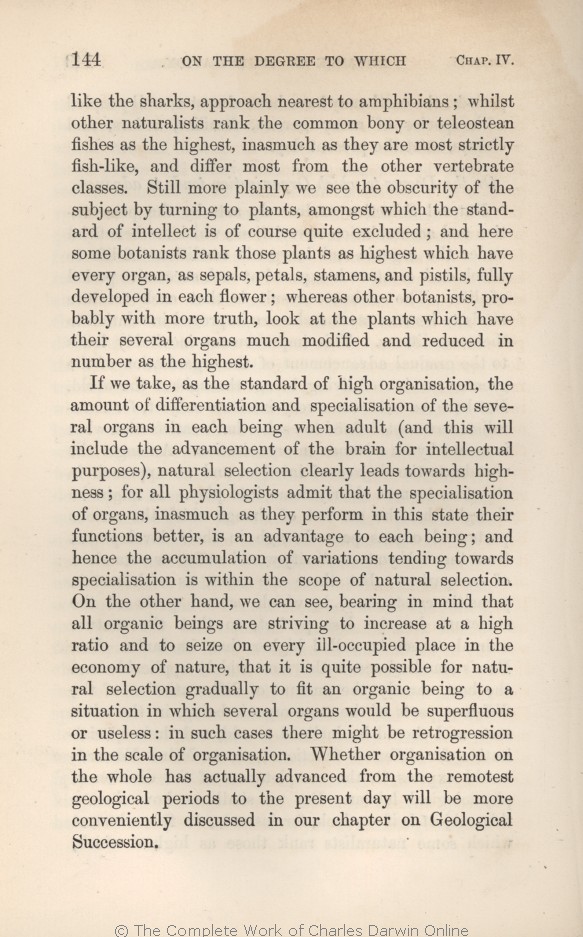which, like the sharks, approach nearest to
amphibians; | amphibians; 1869 1872 | | reptiles; 1861 1866 |
| Still 1861 1866 1869 |
| We see still 1872 |
| we see 1861 1866 1869 | we see 1872 |
| amongst 1866 1869 1872 | | with 1861 |
| ..... 1869 1872 | | somewhat 1861 1866 |
| ..... 1869 1872 | | being of 1861 1866 |
| highest. 1869 1872 | | highest 1861 1866 |
| ..... 1869 1872 | | rank. 1861 1866 |
|
|
If we
take, as the standard of high organisation, the amount of | take, as the standard of high organisation, the amount of 1869 |
| look at the 1861 1866 |
| take as the standard of high organisation, the amount of 1872 |
| purposes), 1869 1872 | | purposes) 1861 1866 |
| OMIT 1869 1872 |
| as the best standard of highness of organisation, 1861 1866 |
| highness; 1861 1866 1869 | | this standard: 1872 |
| they perform in this state 1861 1866 1869 |
| in this state they perform 1872 |
| ill-occupied 1861 1866 1869 |
| unoccupied or less well occupied 1872 |
| an organic 1861 1866 1869 | | a 1872 |
| or 1866 1869 1872 | | and 1861 |
| might 1861 1866 1869 | | would 1872 |
|









